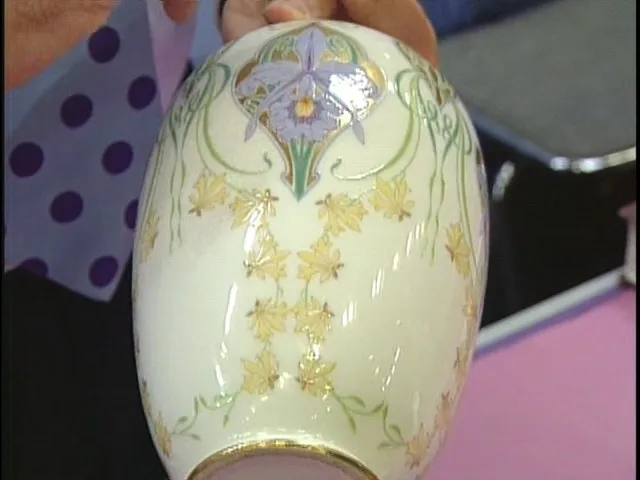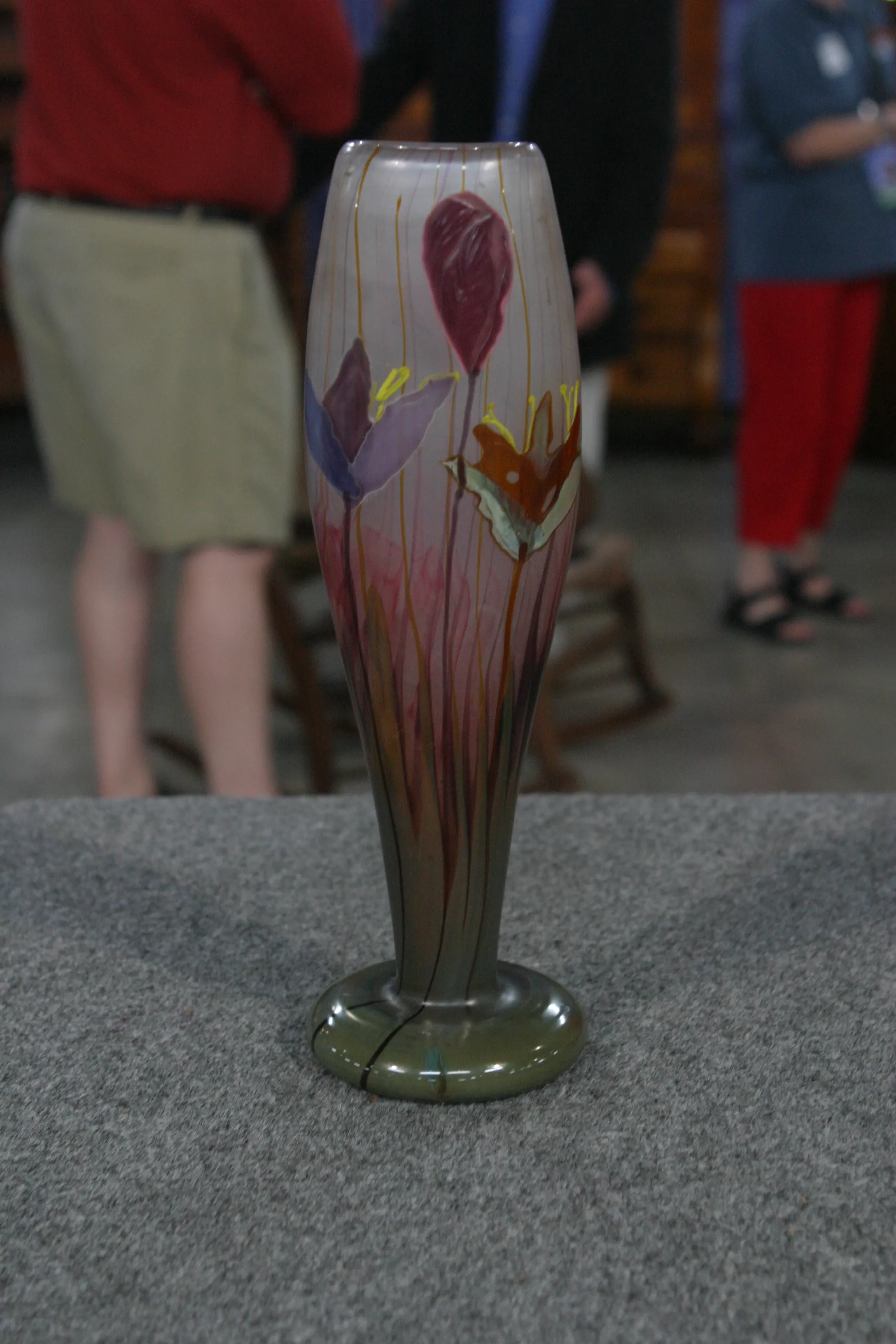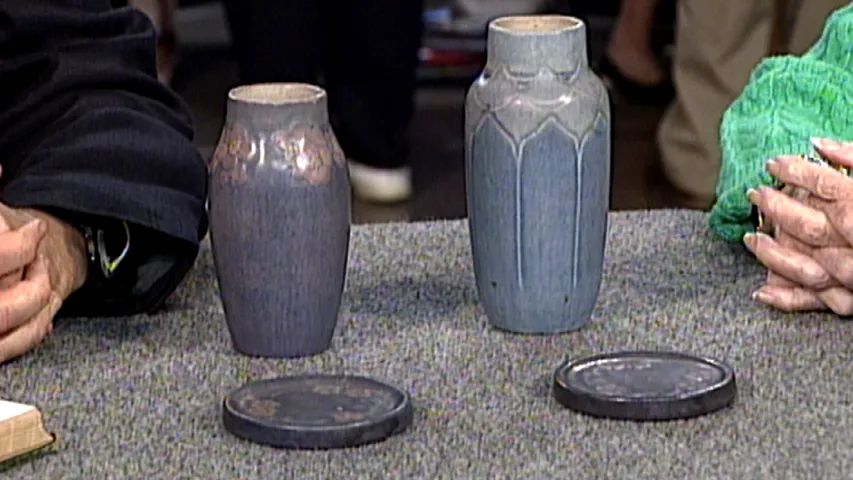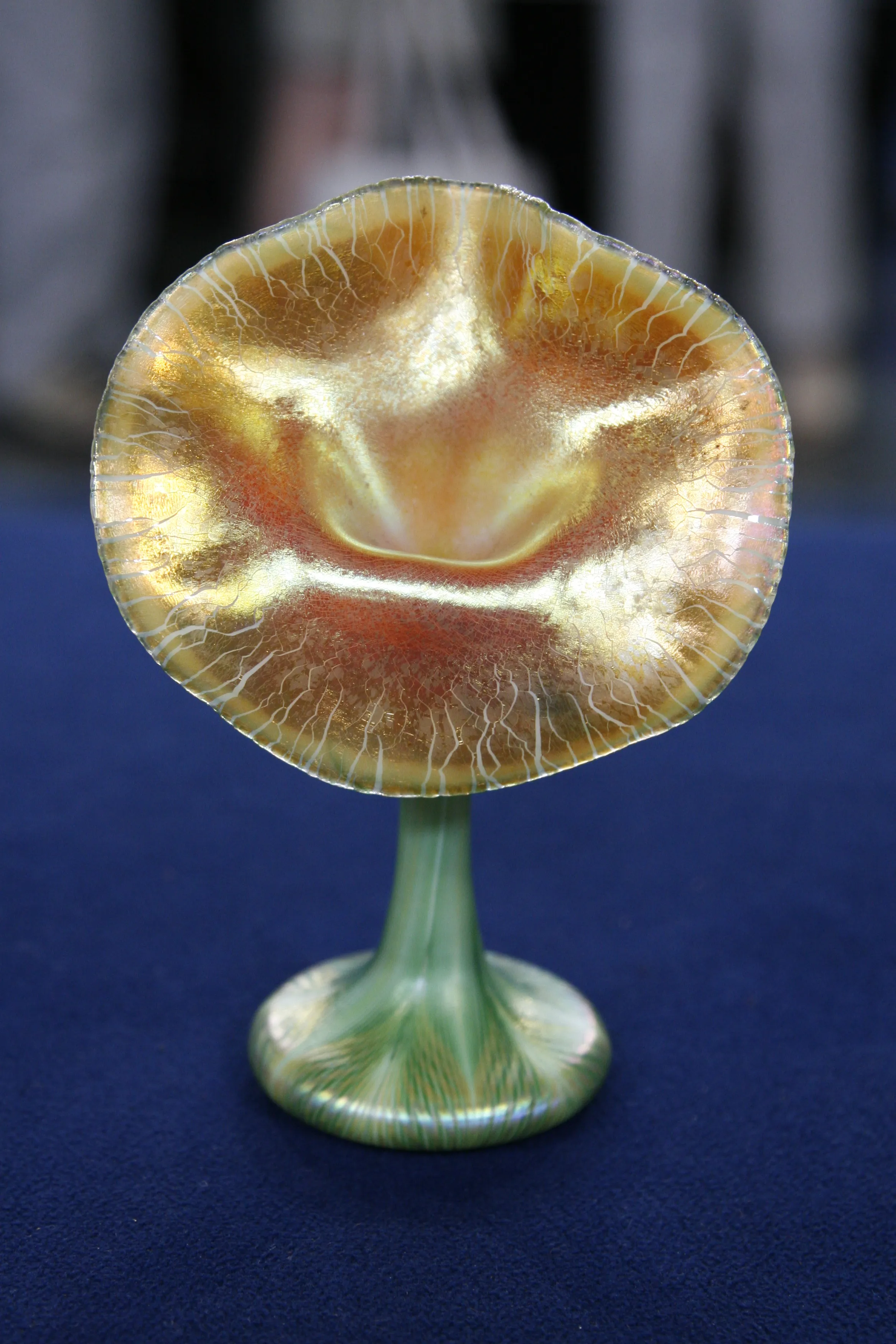GUEST: It was, I believe, my great-great-grandmother's, and the women in my family on my mother's side were all born and raised in Hawaii, and so this was from my great-great-grandmother in Hawaii. My mom told me that it's a Chinese celadon vase, and she said that it's very old because it doesn't say, "Made in China."
APPRAISER: She's right that it is old, and on the point of "Made in China," that was for export in the early 20th century, late 19th century, but we're aware of exceptions where 17th-century tables have been inscribed with a knife, "Made in China for export," so there are a few exceptions. It is a celadon vase, she's quite right, and it is Chinese. These celadon vases started in China in the 14th century. The celadon glaze continued on until today. Now, there are a few things we look at before we attribute a date of production. Firstly, this is a carved porcelain that's then been glazed. Now, as we start from the top down, we have a geometric ground and then a lingzhi or Ruyi band to the neck, and we see little dots to the center in a very fine outline, a double edge, so beautifully carved. Time was taken in this. Then we come to a leaf lappet band, a Greek key, and then the central panel is framed by twin lotus petals.
Now, as we look to the center, there are two or three Buddhistic lions chasing curled ribbons. And the ribbons are beautifully carved. You can see them overlapping and there's an undulation, well-shadowed. As I turn it over, with caution, we see a white porcelain foot, we see a very worn, rough, and discolored foot rim, and we see some discoloration to the porcelain ground, this coffee hue. Now, with porcelain, it does get scratched, it does get worn. At times there is a discoloration, so moisture, dirt does enter into the ground. But when one sees scratching to the outer body, when we see a worn foot rim and discoloration to the porcelain ground, these are all really good signs. And we call this, it's an honest vase. Now, this bottle form, this slender neck leading into a bulbous base, is a typical 18th-century form. It's not an early 14th-, 15th-century vase, but it was produced during the high point of Chinese decorative arts, the very best decorative arts done in the 18th century. I would think today, in a retail setting, it would be worth $25,000.
GUEST: Wonderful. You've made me very happy.











